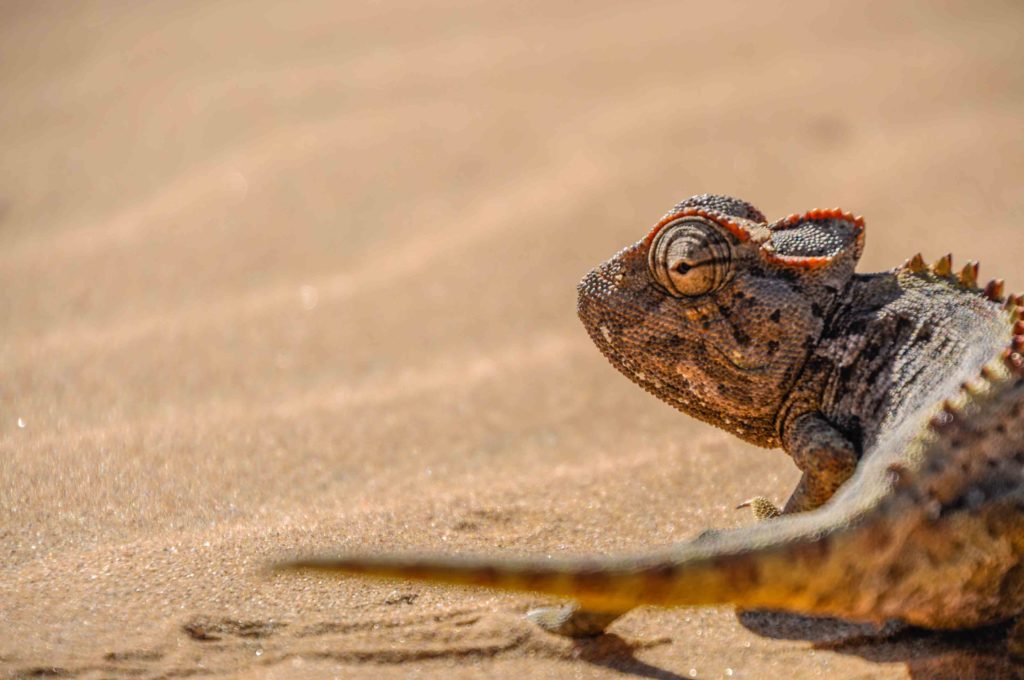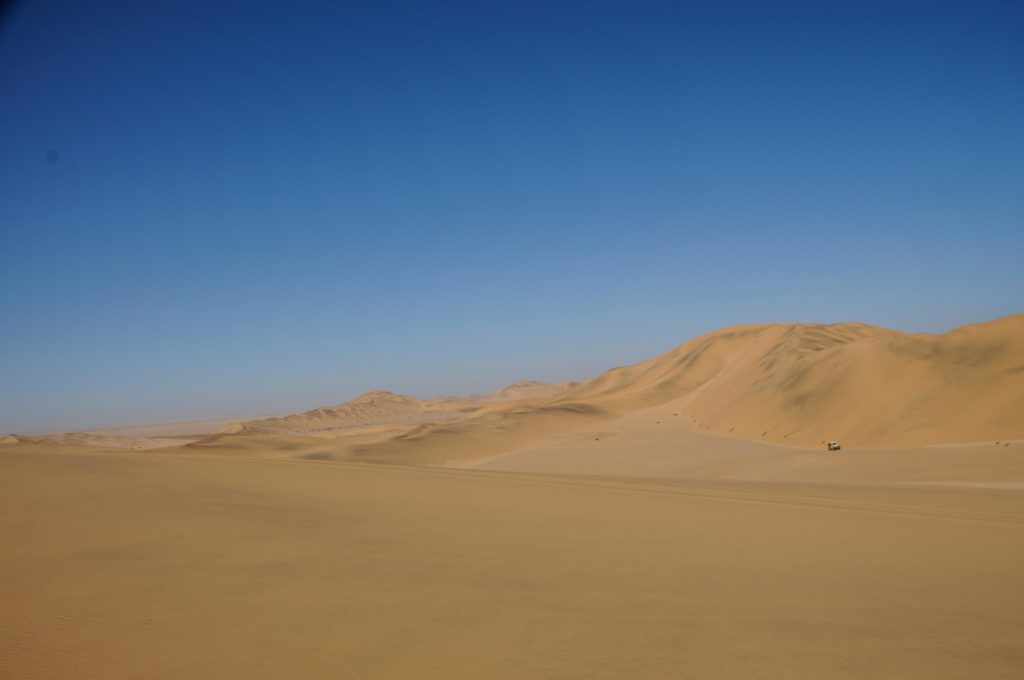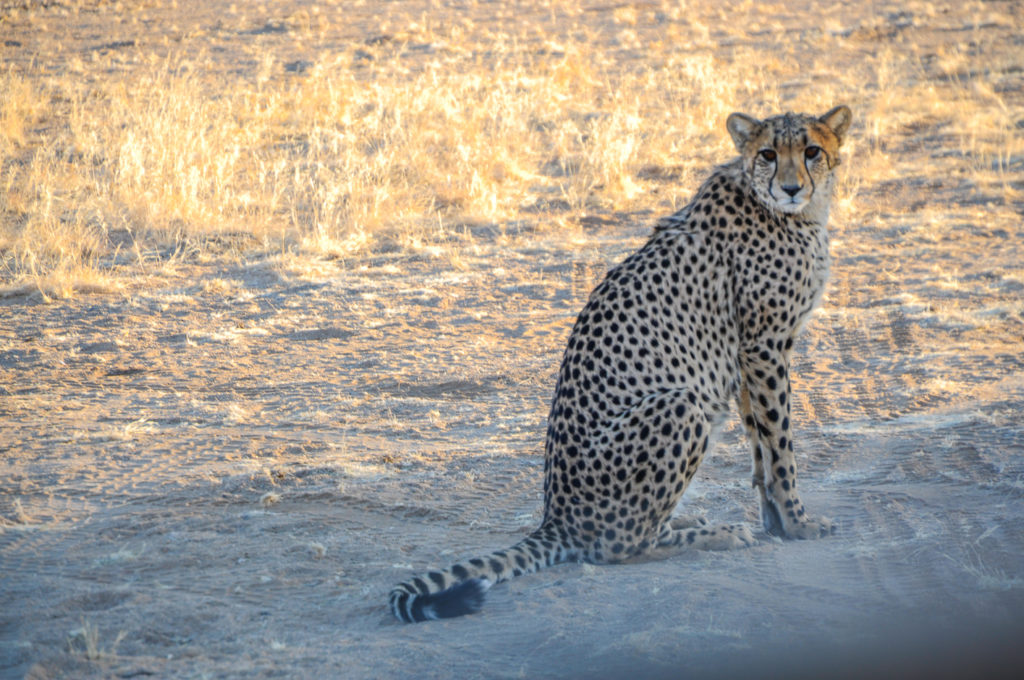Since arriving in Namibia I have been exposed to many issues that Namibians face. One of those complex issues is tension between preserving people or preserving natural resources.
The difficulties of preservation can be seen outside of Swakopmund in the Namib Desert. Our group took in “The Living Desert” tour. As we began, our guide Douglas, showed us disturbing pictures. They depicted a desert crisscrossed with tire tracks. That is definitely not what I want to see when I come to a beautiful Namibian desert. Douglas explained how people’s actions can ruin the desert.

A Chameleon slowly crawls in the Namib Desert. Visitors to the desert must be cautious not to harm its creatures or their habitat.
Another example is when people mishandle the small desert wildlife. Douglas told us how work is being done to regulate and prevent these many issues. Listening to him, I realized this is a difficult issue. Visitors to Namibia want to enjoy every possible experience. However, some of these experiences can damage these very special resources. It is important to balance enjoying these resources with thinking of others who want the opportunity to experience an unharmed desert.

Sand dunes stretch across the Namib Desert. An excess number of vehicles can mar the desert’s beauty.
The desert is not the only natural resource within Namibia. Another resource in the midst of tension is wildlife. Bernd Schneider, the owner of Natural Destinations, explained the conflict between ranchers and wildlife. Ranchers depend on their livestock to make a living. So, when a predator attacks their livestock, some ranchers’ solution may be to shoot the predator. However, these predators include animals such as leopards and cheetahs, animals that are special and incredible.
Specifically, we got a glimpse at the difficulties of preservation while in Solitaire, a tiny town near the Namib-Naukluft National Park. There we had the opportunity to experience a cheetah sanctuary. Our guide was Kelsey. Though originally from Michigan, Kelsey jumped at the chance to manage this Namibian cheetah sanctuary. Similar to what Mr. Schneider said, Kelsey explained how conservationists were struggling to prevent the shooting of these valued predators. I thought she provided excellent insight into a solution to this complex issue. Kelsey said that her cheetah sanctuary was working with the few farms around the area. These ranchers agreed to contact the cheetah sanctuary if these types of predators came onto their land, instead of taking matters into their own hands. Also, they were tolerant of the sanctuary being located near their ranches. This small collaboration between the sanctuary and ranchers is a start to confronting a larger conflict.

A cheetah stares at our group while we visit a cheetah sanctuary in Solitaire. The sanctuary communicates with local ranchers to ensure wildlife safety.
There is another way this sanctuary hopes to ease the tension between the preservation of people or natural resources such as wildlife. Kelsey wants to attach a microchip to each predator in the area. This would allow the sanctuary to know each predator’s location. Kelsey explained that the sanctuary could contact ranchers whenever a predator is on their land so ranchers could relocate livestock to another portion of their land. Doing so would ensure better safety for ranchers’ livestock and less likelihood of a predator getting shot. However, a downside is the expense of microchips and equipment. At this time, the sanctuary is unable to afford this interesting solution.
Each day, I learn these issues are far more complex than I envisioned, that simple answers cannot be slapped onto major concerns. That is why it takes people like Douglas and Kelsey to balance the tension between the preservation of people and natural resources.